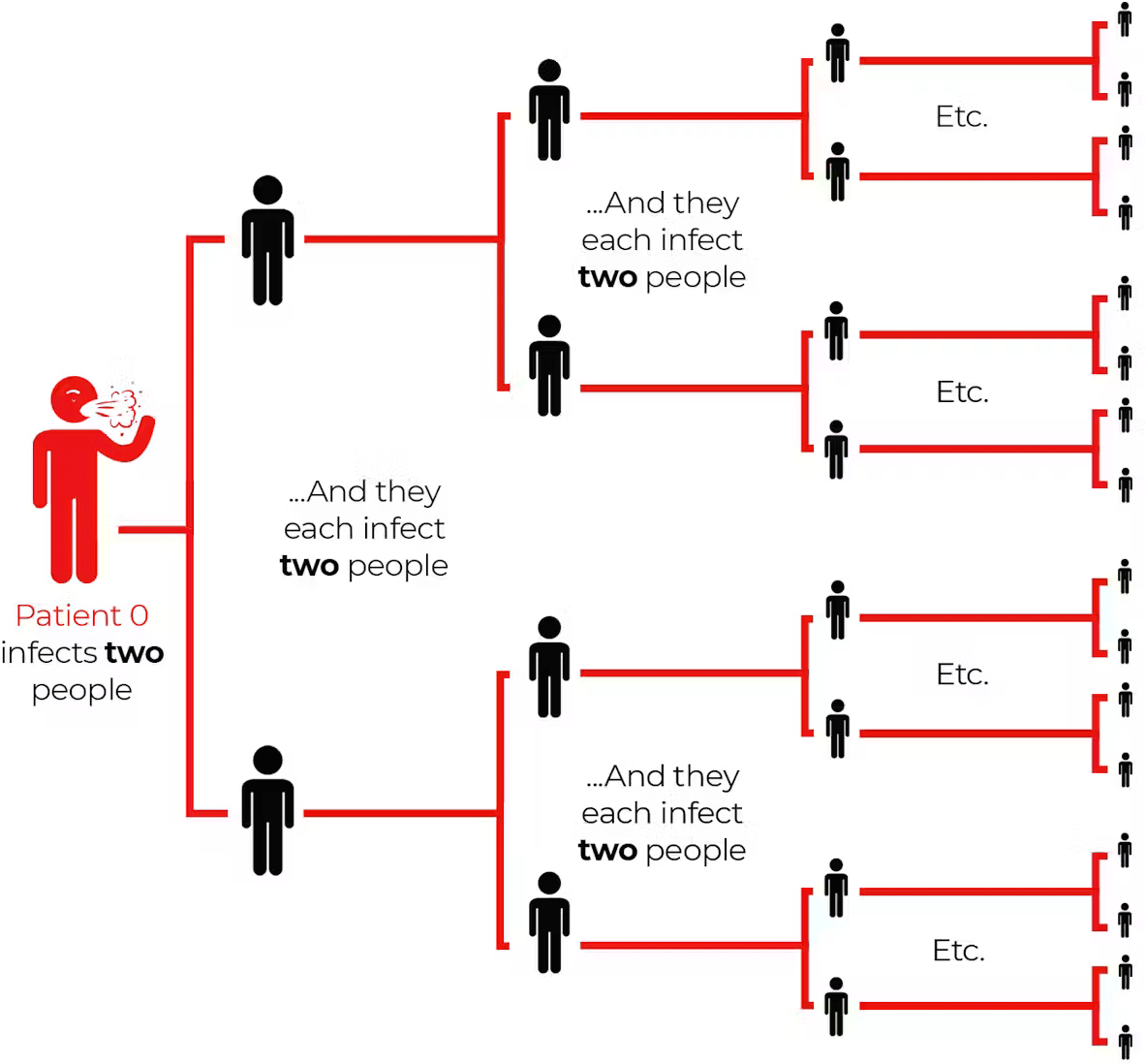Incidence refers to the number of new cases of a disease that occur in a population over a specified time interval. It measures the risk of developing a disease. Incidence is the number of new cases divided by the population at risk.
Prevalence refers to the proportion of a population that has a disease at a specific point in time. It measures the burden of a disease. Prevalence is the number of existing cases divided by the total population.
[Material in this section is from CDC, 2024b unless otherwise noted.]
It took less than forty years after the development of a vaccine for measles to be eliminated within the United States. This does not mean that there are no cases or outbreaks. It just means that the disease does not spread continuously for at least a year. By 1981, the number of reported measles cases was 80% lower than it had been the previous year. Measles was finally eradicated almost twenty years later, in 2000.
In 2019, the U.S. elimination status was threatened due to two prolonged outbreaks in New York. By the end of 2023 however, because of the absence of sustained measles virus transmission for 12 consecutive months, U.S. measles elimination status was maintained. In 2025, there are several hundred confirmed measles cases in the U.S. This represents a significant increase in the confirmed cases reported in 2024.
The World Health Organization is stepping up its vaccination activities, especially in “reluctant communities,” by targeting community and religious leaders and educators. Other strategic vaccination efforts include offering free vaccines to travelers and advising anyone who plans to travel about the importance PAHO of being vaccinated. Strengthening epidemiological surveillance, testing, and hospital readiness are also recommended (PAHO / WHO, 2025).
R Naught (R0)
R naught (R0), the basic reproduction number, is one of the most fundamental and often-used metrics for the study of the way a disease spreads. The symbol R represents the actual transmission rate of a disease and stands for reproduction. Naught, or zero, stands for the zeroth generation (patient zero). It refers to the first documented patient infected by a disease in an epidemic.
R0 is an indicator of the contagiousness or transmissibility of infectious and parasitic agents and represents the number of new infections estimated to stem from a single case in a population that has never seen the disease before. If the R0 is 2, then one person is expected to infect, on average, two new people (Anastassopoulou et al., 2020).
How a Virus Spreads When R0=2

R0 describes how many cases of a disease an infected person will go on to cause—in this imagined scenario when R0=2. Source: The Conversation, CC BY-ND.
The debate continues between freedom of religious and personal freedom on the one hand and the good of the community on the other. Meantime, herd immunity may be achieved when 95% of a community are immunized; the immunity of the 95% protects the remaining 5%. Notably, when the immunized group decreases, the protection for non-immunized persons decreases also.
There are a few circumstances where people should not get vaccinated with the MMR vaccine, or they should wait. Measles vaccine contraindications are:
- Severe allergic reaction to vaccine component or following a prior dose
- Severely immunocompromised
- Systemic high-dose corticosteroid therapy for 14 days or more
- HIV infection, regardless of immunocompetence status*
- Family history of congenital or heredity immunodeficiency in first-degree relatives
- Pregnancy
*MMRV only. The Measles, mumps, rubella and varicella, or chickenpox vaccine, is not approved for people who are infected with HIV. However, available data indicate that vaccination with MMR has not been associated with severe or unusual adverse reactions in HIV-infected persons who are not severely immunosuppressed, although antibody responses have been variable. MMR vaccine is recommended for susceptible HIV-infected persons aged 12 months or older with no evidence of current severe immunosuppression (Gastañuduy, 2024).
